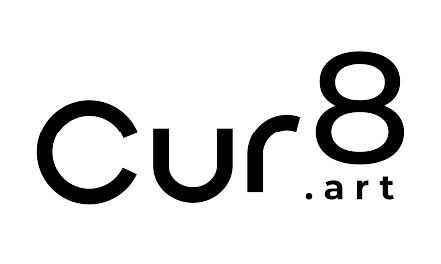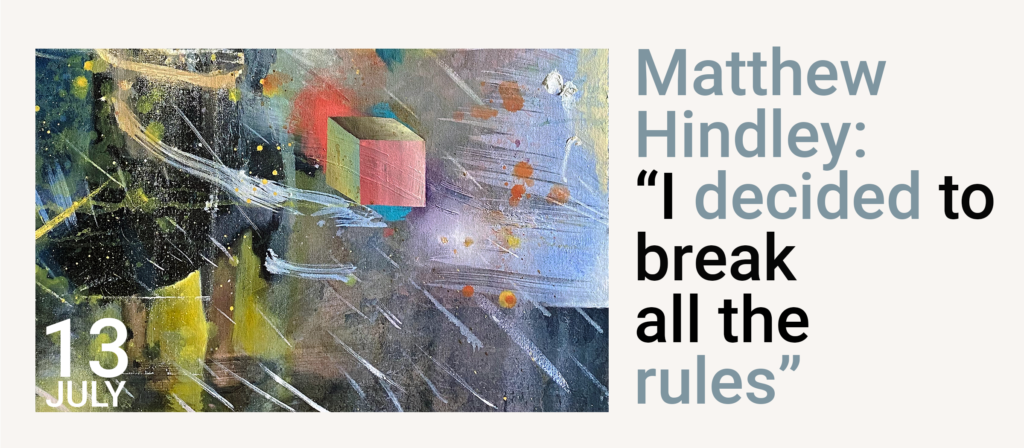

By Cur8.art
Matthew Hindley is an artist that refuses to be pinned down. A master of reinvention, Hindley’s enviable practice exists in a state of perpetual transformation. His oeuvre, complex and ever-evolving encompasses series of works that delve into the abstract, figurative and surreal. We recently had the opportunity to catch up with the artist, unearthing the vision behind his prolific practice and work.
A sharp climb up a narrow wooden staircase in Woodstock takes us to Hindley’s live-in studio, an open plan space where we are met with a glorious array of the artist’s new paintings located sporadically around the room. Asking Hindley how he thinks collectors are going to react to this new work he exclaims, “They haven’t seen these. This is going to freak them out – like is this even the same artist?” – a true statement for every new trajectory the artist has embarked on over the course of his oeuvre. And so we decided to dig a bit deeper to try get to the bottom of Hindley’s seemingly unflinching nerve.
What do you get from painting?
Painting never dies. I’m interested in this idea that painting can actually work on the brain and release dopamine. You know, the pleasure of looking. I want to know how many ways there are to stimulate a joyful experience through colour, line, arch and shadow. And to bring it to the point where you get lost in it, in this immersive experience. That’s the point of painting – to just be completely stopped in your tracks.
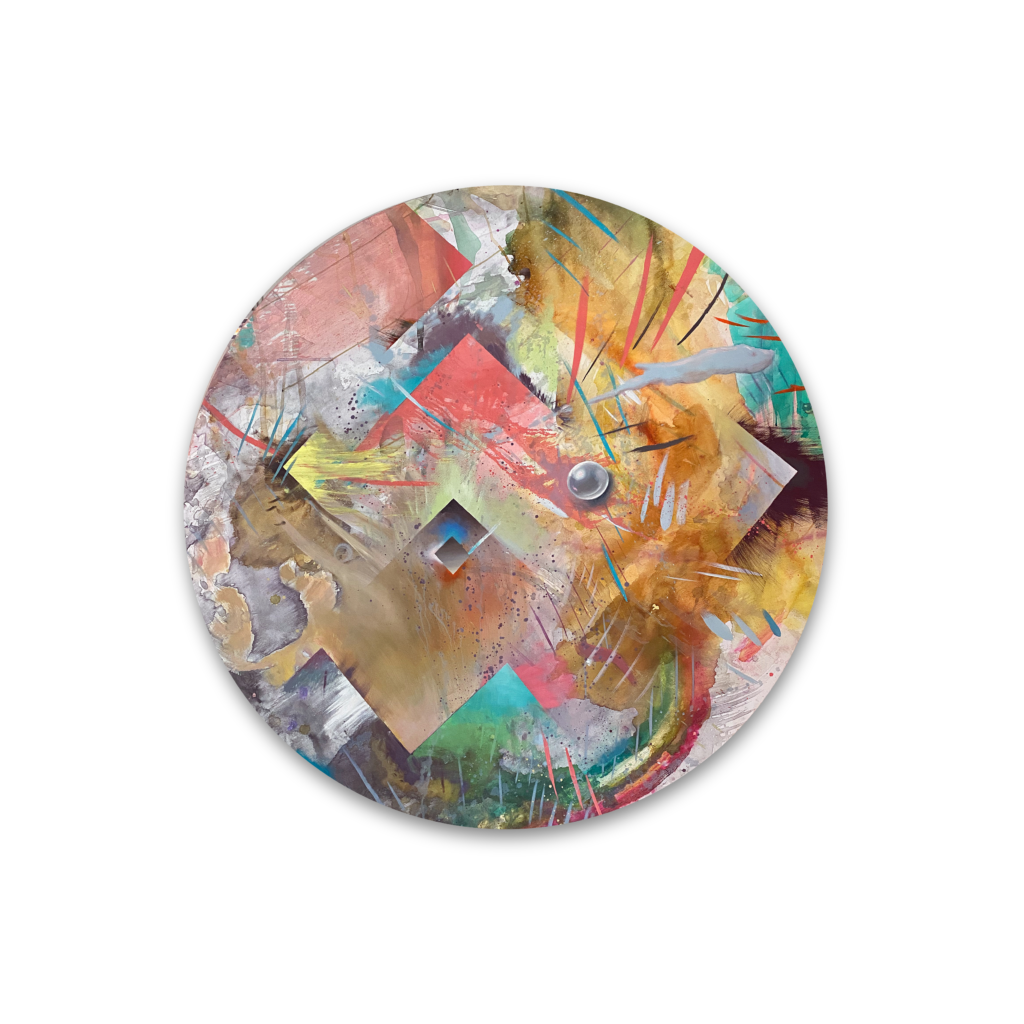



Do you plan before you begin a new work?
It’s completely spontaneous and everything is terrifying – like is it going to work? Because there’s no certainty. There are things that emerge like triangular shapes, pearls, weird things – and I don’t even know where they are coming from, but I have to follow because something in my heart is telling me to.
We have seen a lot of your works on the secondary market this year, what are your thoughts and do these sales reflect your current practice?
Because I have done so many things, in the secondary market the collectors don’t understand me at all. My practice is misunderstood, but they keep auctioning every kind of work that they can find of mine and that’s been great. But I don’t follow my auction results and I don’t know or really care about the estimates. For the living artist it’s much more difficult and I think a lot of collectors acknowledge that. I mean I’ve had collectors who say, “Until your auction market turns around we can’t buy your work.” Everyone is looking at the price of the sale and if that’s not good that’s it. It is brutal. But either way you’re screwed – if you do well or badly. You’re supposed to be just above estimate continuously.
Can you share with us insights into the experimental aspects of your practice and how you’ve come to find space in continuing reinvention.
I have experimental strands on the sides where I’m trying, seeing and wondering – like if I did this what will happen? It’s interesting how if there’s a figure in one then I’m looking for figures in others and they all become spaces where figures could be. Whereas before they were just abstracts. They all have that absence. It changes the feeling of what could be inside these spaces. So I also find it interesting that it can trigger that reaction.


One other thing, technically, is that I decided to break all the rules. You’re not supposed to put water based stuff onto oil, that’s one of the big rules and I was like – what if I actually do it? So now I’ve been working with mixing paint that has water and oil in it. It changes. It reacts to the underneath and then it doesn’t mix, it separates, reticulates on the underneath surface and draws together into these spaces. So there’s these examples of watercolor on top of oil and weird things I’ve never tried before.
I’m also starting to extend the work onto the frames so that the frames are another field where the painting can live. It was fun to jump across into the frame; it really made a difference. It felt quite naughty, especially in the beginning because they cost a lot of money and they come back so beautifully framed, so neat and perfect and valuable.
[There are also a lot of pearls shapes in the work.] I’ve just always been obsessed with pearls and grapes in Italian paintings. It’s just been a real love. Now when I’m painting, because I paint all the time, my hand is so precise. Sometimes I look at what I’m doing and I can’t believe I’m doing it because it’s so perfect. My brain and my hand are so connected.
Do you have any interest in experimenting further with digital work?
I’ve always had a technological side to my work and now it comes through in these different ways. [Looking at the work] it almost feels like it’s happening already and with the new work it will be amazing. The painting, the image can be the QR CODE and when you hold the phone upto it you can take all these elements out and float them in space in front of the painting.
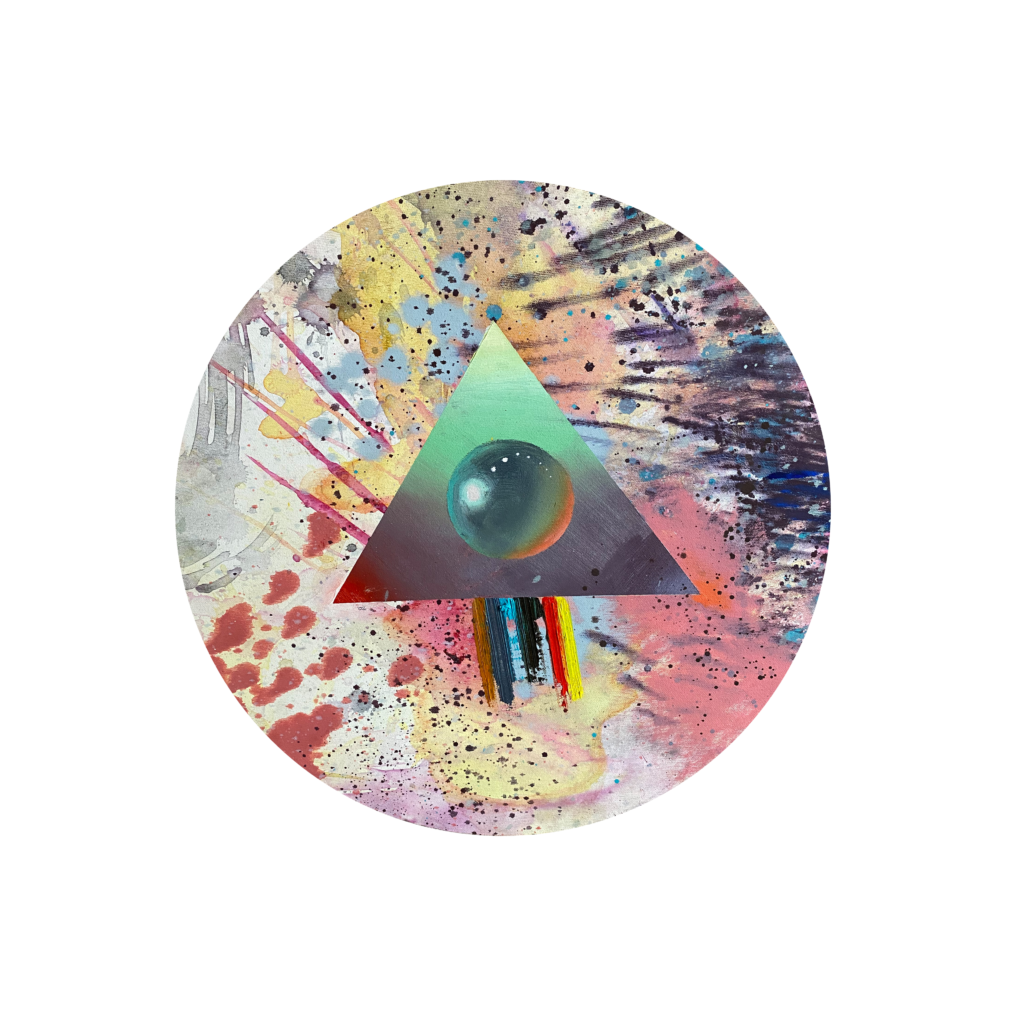

You’re incredibly prolific, would you work with an assistant?
For the figurative painting I could give them assignments and say paint this shadow here just flat black, and they could do that stuff but there’s no way I could have any assistance with the new work. I mean the only person who does is my daughter, obviously because she is allowed to. She comes in like, “daddy you know you need a little thing here” and then she says, “I think it looks much better now”.
Can you walk us through your practice?
I call it hustle mode basically. My mind is completely into the work in my studio and how I can share it. I’ve got all these different collectors and people I know and I get into that mode of reaching out to people to say hi. Sometimes you need to look outwards and connect to those who love your work. Activate the external world, otherwise it is very internal and I’m just in my bubble painting and I don’t think about anyone else. So it’s two very distinct activities and it’s either one or the other.
How do you get into the zone?
It sort of happens, like you have a show or you need this. It depends on the requirements of the situation and if I’m working toward something or exploring. At the moment I feel like I’m exploring these new ideas and I don’t have a particular show I’m working towards so that’s why I can take my time. And then other times it will be all in on a big solo and I will work for six months, then you have more of a focus.
How do you start exploring a completely new avenue in your work?
It’s almost like little by little. It is like following the crumbs in the forest, it’s not like one big moment of revelation. [For example] there was this little drop and I put a little highlight and then a shadow and then I thought oh that’s nice, and then I painted another and another. Then you’re like wow what am I doing you – and you are just following the trail. There’s that whole thing about the wilderness and painters and being in the wilderness and being lost and then finding your way. Some painters relate it to mining, you find a seam in the rock and there’s gold in it and then you have to look for another seam. It’s almost like darkness and being lost in the wilderness and then there’s periods where you’ve really got everything lined up. People are often afraid to make mistakes and put them down because they don’t realize they can just make another one straight away. People are like I’ve done this one painting. Should I become a painter? Do like 20 or 30, or 50 and then decide.
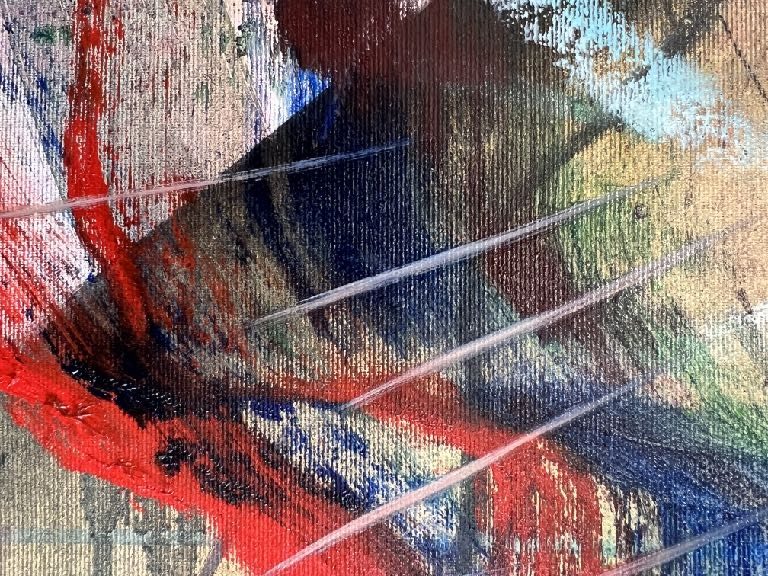

You’re very open in sharing your work with others online through Instagram. What do you hope people will gain from engaging with your practice?
When it comes to social media we are so trained on likes and comments and so you try to get like a hit. You try to get something that people are going to like and comment on, and everytime someone likes it you get this burst of pleasure. But I guess it’s just sharing my process and hoping that everyone is on board. Often when I’m sharing I’m quite ambivalent and I’m not sure if I should share or not and then I force myself to because it’s better to share something then nothing because you have this high standard of shareability. When you hardly share, people literally think you’re not working. I try not to be too attached when I do it, I do the best I can and then move on and hope that it’s going to be well received and I’m just trying to share as honestly as I can. It’s just putting your heart on the line – like this is what I’m doing. It’s quite scary.
How have things changed for you since the pandemic?
These days I don’t paint from 9 – 5, sometimes I will paint at one in the morning, especially now that I’m living in my studio. It’s just so nice to paint at any time. It has been a bit overwhelming at times, but it’s also been really good for my practice because there’s no restrictions. Before Covid it was very 9 – 5, everyday was the same, very structured and now it’s completely open ended and up to me which is scary because you can just lie in bed and watch series all day and there’s no one to say anything.
Who are some artists on your radar at the moment?
Louise Bonnet, Michael Armitage, and Lava Baby (Emma Stern).
Do you listen to anything while you are working – music, podcasts?
I don’t, I look at other painters’ works. I know a lot of my friends listen to podcasts while they paint but I don’t know why I don’t. I’ll usually have a series on in the background and I’m obsessed with Sherlock Holmes fanfiction at the moment. I think I heard that Andy Warhol always had the TV on. It’s almost like it’s a bit lonely and cold without voices or people’s faces – that’s enough to make you feel like you’re not alone.
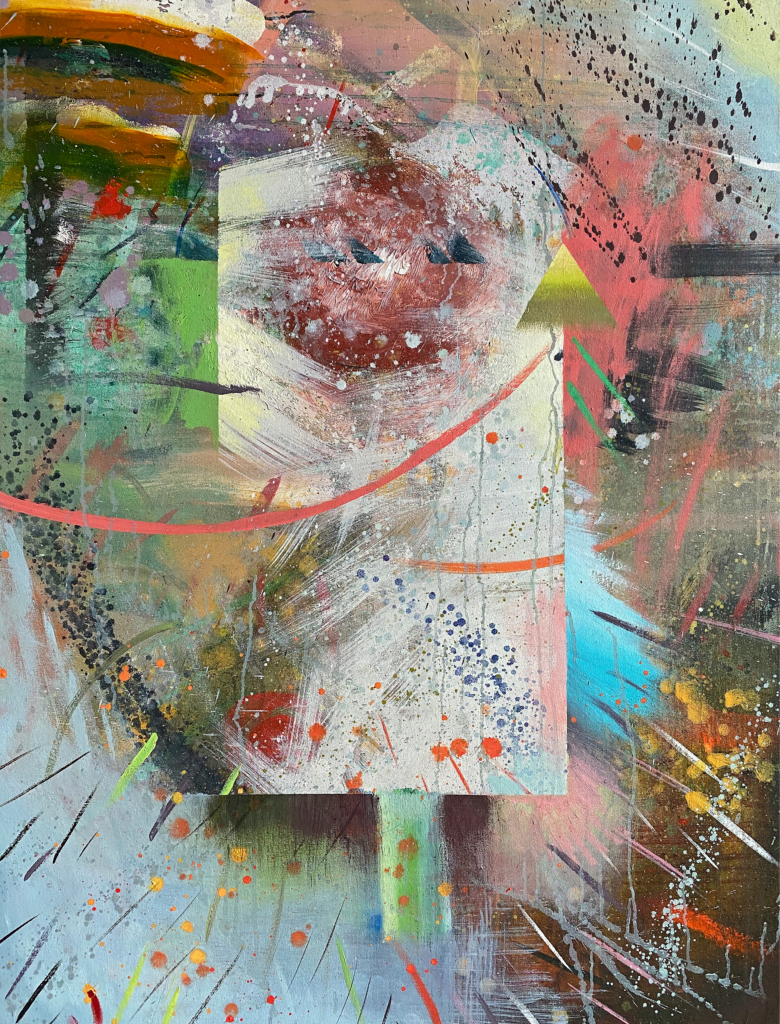

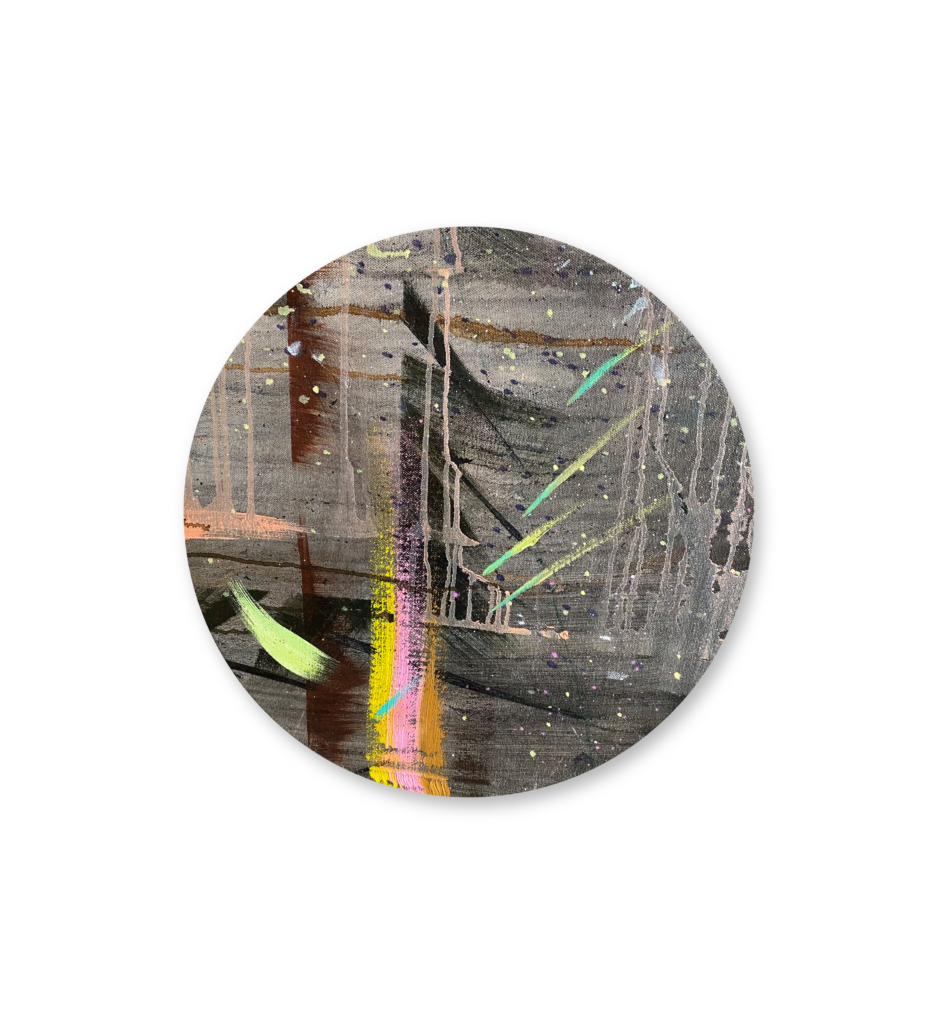

What advice would you give to artists trying to break into the industry?
There’s not one way [to be a successful artist] – that’s the problem, but I’m going to reference William Kentridge. Something he said was to surround yourself with people that love your work – which is kind of no brainer, but also isn’t something you would make as a central principle because you just think everyone should love your work. If you look around there’s actually people who really are fans and to try to find people who love your work is such a good reward, you place yourself into a very nurturing structure. So following those people that love your work and trying to work with them and interact with them and engage with them is important.
Forging a path through a constantly evolving practice is a no easy feat for an artist. Often the constraints of consistency, and the pressures created by dealers, gallerists and collectors to commodify the outcomes of an artist’s practice, can influence the compulsivity that artists’ so rely on to guide them through the process of art making. This compelling and intuitive knowledge is essential to Hindley’s practice, and is the reason his work has seen a multitude of flourishing experiments in painting.
